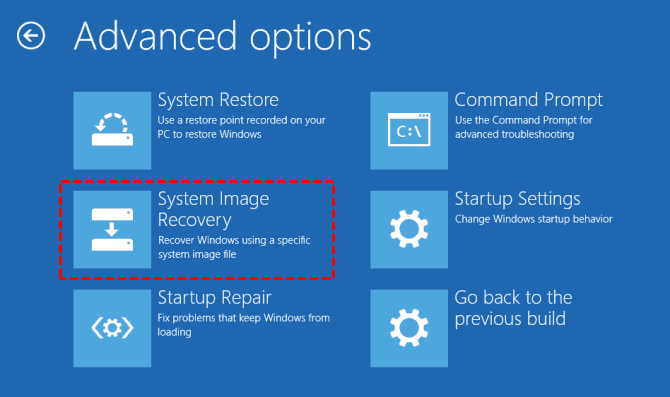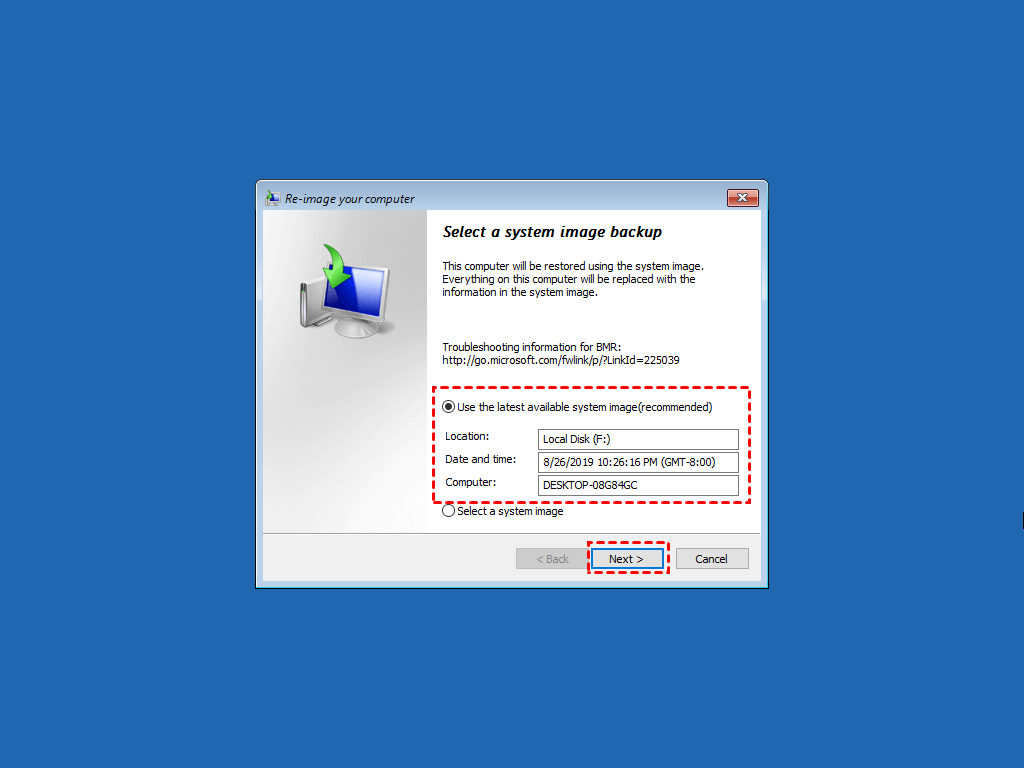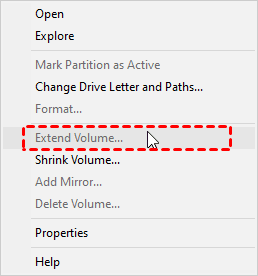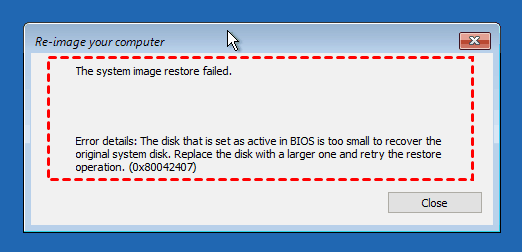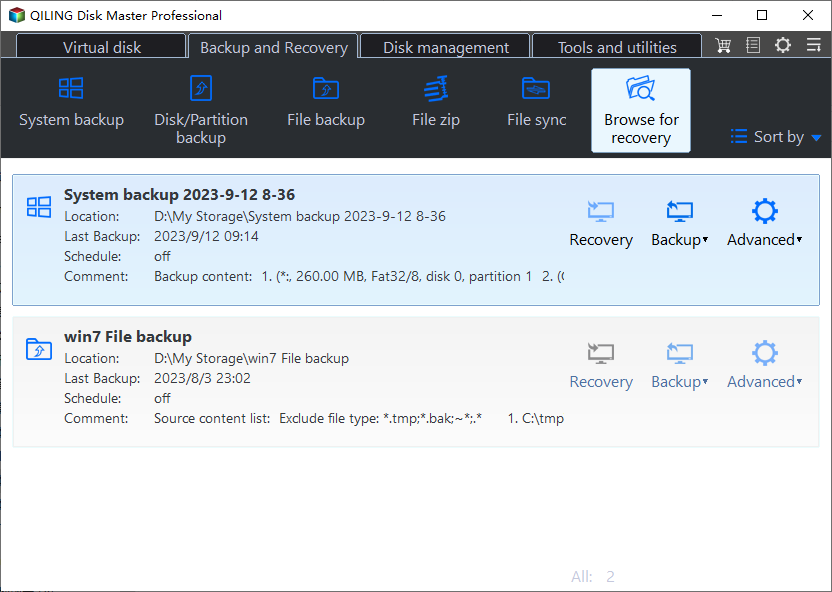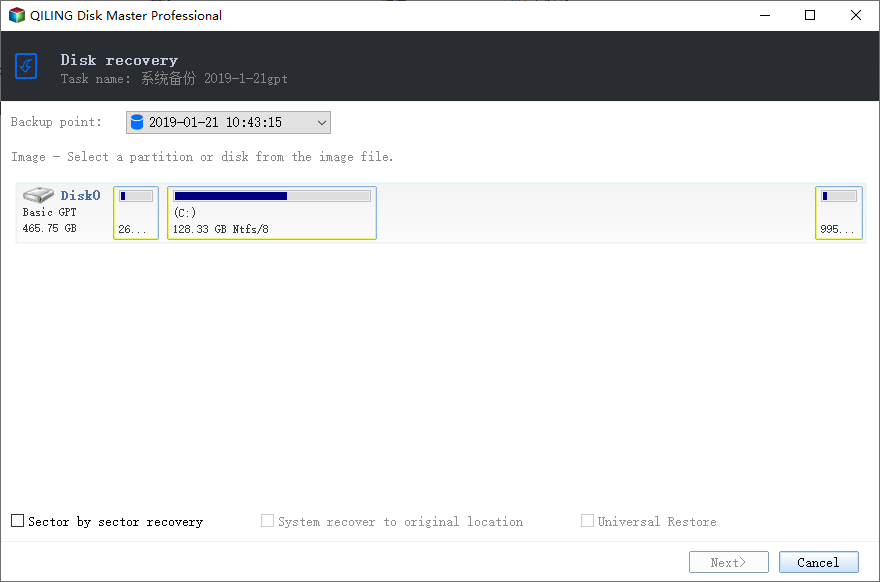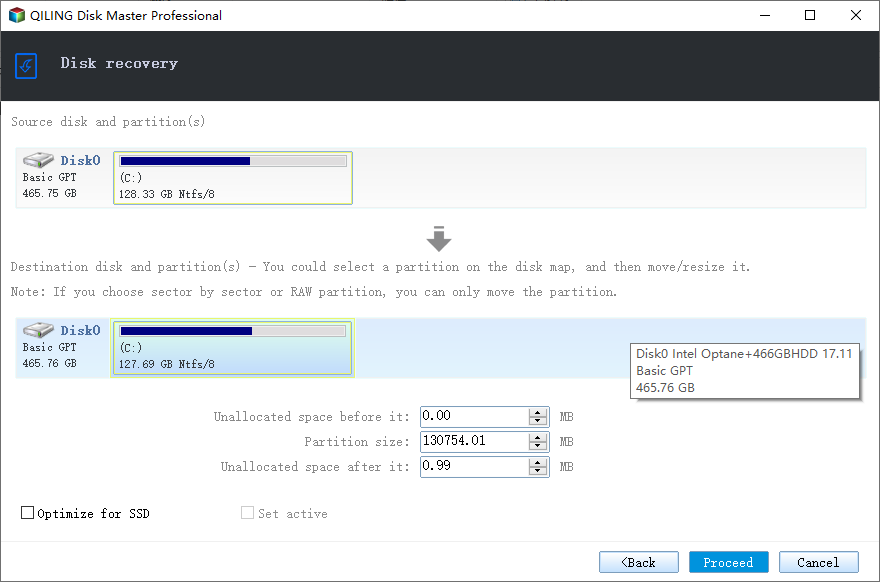Restore Windows 10 or 11 System Image to New Hard Drive (2 Ways)
The need to backup and restore Windows 10 /11 to new hard drive
To transfer Windows 10 to a new hard drive without reinstalling the operating system and programs, you can back up Windows 10 to an external hard drive or USB and then restore the system image to the new hard drive or SSD. This approach saves time and effort compared to a fresh installation.
Although Windows 10 has been released for a long time, it still experiences bugs reported by users. To mitigate this, it's crucial to create a system image using Windows 10's built-in backup utility, allowing you to restore your system in the event of a hard drive failure or other unexpected errors.
When migrating Windows 10 or 11 to a new hard drive, consider using the built-in Backup and Restore (Windows 7) or a reliable backup and restore software like Qiling Disk Master Standard. Both options can create a Windows backup image and a bootable USB to boot your computer, but Qiling Disk Master Standard is simpler and more powerful.
Method 1. Restore Windows 10/11 system image to new hard drive with Backup and Restore (Windows 7)
To restore a Windows image backup from an external hard drive or USB drive to a new hard drive, prepare an external hard drive or USB flash drive for the backup image and a CD/DVD for the system repair disc.
- To create a full system backup of Windows 10/11 using the Backup and Restore (Windows 7) feature, follow these steps: Open the Control Panel, click on System and Security, then select Backup and Restore (Windows 7). Click on "Set up a new backup" and select the drive where you want to save the backup.
- To restore a Windows 10/11 system image to a new hard drive, first, ensure the new drive is the same size or larger than the original. Then, boot from the Windows installation media, such as a USB drive or CD/DVD.
- After successfully backing up and restoring a Windows 10 image to a new hard drive, several steps are necessary to ensure the system is fully functional and secure. First, update Windows 10 to the latest version using the built-in Windows Update feature. Next, install any necessary drivers for the new hardware, such as the graphics card, sound card, and network card.
Part 1: Create Windows 10/11 full system backup with Backup and Restore (Windows 7)
Step 1. Go to Control Panel, click System and Security and Backup and Restore (Windows 7) in order.
Step 2. Click Create a system image in the left pane.
The option "Set up backup" at the right side allows you to backup files and include a system image backup during the process. This includes adding backup files, system, and other partitions by checking them in the last window.
Step 3. Choose the destination drive (external hard drive or USB flash drive) to save your backup.
Step 4. The drives that are required for Windows to run will be included by default and click Next to continue.
Step 5. Confirm the settings and click Proceed.
When the backup is done, you'll be asked if you want to create a system repair disc (CD/DVD). Click Yes to create it, or choose to create a Windows 10 recovery disk with a USB flash drive if you don't have a CD-ROM device. This helps access recovery options when your computer can't boot.
Part 2: Restore Windows 10/11 system image to new hard drive
Windows 10 system image recovery, a tool in the Windows recovery environment, can be used to restore a Windows 10/11 image backup to another drive, helping to get the computer back to a normal state.
Step 1. To replace the hard drive in Windows 10/11, shut down the computer, switch to the new hard drive, and connect the backup disk containing the Windows 10/11 backup image. Additionally, have a system repair disc handy.
Step 2. Boot the computer from the system repair disc and change the BIOS settings to allow booting from the CD/DVD by pressing the specified key on the first screen.
Step 3. Click Next when you see the Windows Setup interface for the first time, then choose Repair your computer > Troubleshoot > Advanced options > System Image Recovery > Windows 10 or Windows 11 subsequently.
Step 4. In the Re-image your computer window, tick Use the latest available system image and then click Next.
Step 5. To restore a Windows image to another drive, select the "Format and repartition disks" option, then click "Next > Finish > Yes" in sequence.
Part 3: What to do after backup and restore Windows 10/11 image to new hard drive?
To make the most of your new hard drive's disk space and avoid system restore failed errors, you need to take further action based on your specific situation. There are two main scenarios to consider:
Situation 1: Restore Windows 10/11 backup to larger hard drive
If you replace an old hard drive with a new one that's larger, you'll have unallocated space at the end of the new disk. To utilize this space, you'll need to extend the partition size, otherwise, you won't be able to store data or perform any operations on it. I can guide you through the simple steps to extend the partition.
Step 1. Press Win + R to open the run window and type diskmgmt.msc to open Disk Management in Windows 10/11.
Step 2. To extend the volume, right-click the partition at the left side of the unallocated space and select "Extend Volume." This will open the Extend Volume Wizard. Click "Next" to proceed.
Step 3. To extend the partition of a disk, select the disk you want to extend the partition from and click Next. This is usually done using unallocated space on the same disk, unless the disk is a dynamic disk.
Step 4. Click Finish to start this operation.
This method is effective in most cases, but it has an exception. If there is a 450MB recovery partition or other partition between the system partition and unallocated space, this method becomes invalid. In such cases, a professional feature like "Edit Partitions" in Qiling Disk Master is needed to resize partitions.
Situation 2: Restore Windows 10/11 image to smaller drive
Users who restore a Windows 10/11 image to a smaller drive often encounter issues, as the Windows backup and restore software cannot support restoring to a partition layout that is smaller than the original disk, leaving them out of luck.
If you restore a system image created on a larger hard drive to a smaller SSD, the system image restore will fail due to the smaller disk size, indicating the disk is too small.
If you receive this error, the backup image is useless unless you replace the smaller hard drive with a larger one. Alternatively, you can use a third-party tool like Qiling Disk Master to backup and restore only used sectors on the old hard drive, or directly clone Windows 10 to a new hard drive.
Besides the system image restore error, Windows built-in backup tool also has backup errors, including system image backup failures due to issues like insufficient space, EFI or BIOS incompatibility, and backup errors 0x80070002.
Method 2. Restore Windows 10/11 image to new hard drive with Qiling Disk Master Standard
For a reliable and efficient backup and restore solution, consider using Qiling Disk Master Standard instead of Backup and Restore (Windows 7). This software allows you to easily backup and restore your Windows 10/11 system image to a new hard drive while your computer is running smoothly.
This software allows you to restore a Windows 10/11 system image to a smaller drive, making it ideal for users who want to upgrade their storage capacity. It also has the ability to backup only used sectors of file systems, which reduces the size of the image file and backup time. Furthermore, it enables you to create bootable media and boot an unbootable computer, providing a comprehensive solution for system backup and recovery.
You can perform a Windows 10 system image restore to a different computer, even with different hardware, using the "Universal Restore" feature available in paid software like �iling Disk Master Professional. This feature allows you to reuse unallocated space after restoration, but only if the restored hard drive has a single partition. The software can also help you edit partitions if needed. To try this, download Qiling Disk Master Professional now!Qiling Disk Master Professional. This feature allows you to reuse unallocated space after restoration, but only if the restored hard drive has a single partition. The software can also help you edit partitions if needed. To try this, download Qiling Disk Master Professional now!
Step by step guide: Perform Windows 10/11 system image restore to new hard drive
To avoid reinstalling Windows and losing data, create a system image backup in Windows 10/11 before something goes wrong, which allows you to restore the operating system, programs, and data to a new hard drive using the built-in tool, eliminating the need for a reinstall and preserving all installed programs and data.
Here you will use the System Backup feature of Qiling Disk Master to backup system, preferably to an external storage device, which can greatly avoid computer failure and consequent data loss. If your computer works properly, it's suggested to schedule backup system (daily, weekly, monthly) to keep everything on it.
To create a bootable USB, use the "Create Bootable Media" feature in Qiling Disk Master on a working computer, which can be used on any Windows computer. If your computer is already bootable, consider creating a Windows recovery environment using Qiling Disk Master Professional.
To restore a system image from Windows 10/11 to a new drive, including a new SSD, follow these steps. The process allows you to restore the system image to a new drive, effectively replacing the old one.
Step 1. To install a new hard drive in Windows 10/11, connect an external drive containing a system image and bootable media to your computer, and then boot from the bootable media.
Step 2. After loading, click on "Select Image File" under the "Restore" tab, then find the image on your external drive.
Step 3. To restore this system, tick "restore this system backup" and tick "Universal restore", then click Next. If a scheduled backup task was set, you'll have multiple backup images to choose from.
Step 4. Select your new hard drive as destination to restore the image and click Next.
Please select the first partition on the target disk as destination, otherwise the system may not be able to boot from the target disk.
Step 5. Click Proceed to install system image on new hard drive.
Tips:
◒ The Universal Restore feature will automatically install all necessary drivers to boot Windows and is enabled by default when restoring a Windows 10/11 system image to a different computer, prompting a prompt to upgrade to the professional version of the software after clicking Proceed.
◒The SSD Alignment feature can improve the writing and reading speed of SSDs by utilizing 4k alignment technology, making it beneficial for restoring Windows 10/11 system images to new SSDs.
◒You can use the Windows 10/11 image restore tool to restore Windows 7 system image to a new hard drive, as well as other operating systems like Windows 8.
◒ If your new hard drive is large enough, you can create a disk image of your old hard drive in Windows 10/11, and then restore the image to the new hard drive. This allows you to transfer everything from the old disk to the new one.
To restore a Windows system image on a different computer without installing any software, you can use the built-in Windows features. First, you'll need to create a bootable USB drive or CD/DVD using the Windows installation media. Then, follow the on-screen instructions to boot from the USB drive or CD/DVD. Next, select the option to restore your PC from a system image.
You can upgrade to Qiling Disk Master Technician, create a portable version on a USB drive using the "Create bootable media" feature, and run it on any computer to use its features, such as automatic USB backup.
Frequently asked questions about Windows image backup restore to new drive
1. Can I restore Windows 10 system image to a new hard drive?
You can restore a Windows 10 system image to a new hard drive using a reliable backup and restore software, such as the built-in Backup and Restore (Windows 7) or a third-party tool like Qiling Disk Master Standard.
2. How do I restore a system image to another computer?
You can't usually restore a system image from one computer to another due to driver incompatibilities, as each computer has its own specific drivers required for starting Windows. However, if you can resolve this issue, such as using the "Universal Restore" feature in Qiling Disk Master, it becomes possible to restore the system image.
3. Does a system image save everything?
A system image is a snapshot of your system partition, including all items such as the operating system, system files and drivers, installed programs, and personal data.
Conclusion
To restore a Windows 10/11 image to a new hard drive, you can use either the built-in Windows tool or Qiling Disk Master Standard. Regardless of the method, having a bootable media, such as an optical drive or a USB flash drive, is necessary in case your system crashes. This will allow you to easily transfer the image to the new hard drive and get your system up and running again.
Qiling Disk Master Standard is a good choice due to its simplicity, compatibility, and feature-richness, allowing for easy system image restoration to smaller drives and booting from it, as well as features like schedule backup, backup scheme, and �ncremental and differential backup, which are also available in the professional version.incremental and differential backup, which are also available in the professional version.
Trust me, it's one of the most powerful software for you to secure your data and system. Just explore it by yourself now!
Related Articles
- 2 Ways to Transfer System Image to New Hard Drive
- How to Move OS to Another Drive without Reinstalling
- How to Restore A System Image to New SSD
- How to Deploy Windows 10 System Image to New Hardware
- Windows 10 Backup Not Working: Solved


